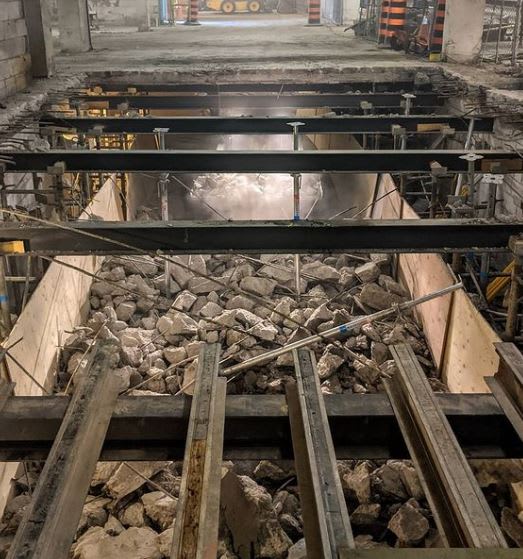vlad1981
Civil/Environmental
- Jun 4, 2019
- 17
Good morning all.
Iam doing some demolition work of some existing slab. Slab is going to be demolished and replaced by a new one. Said slab is shored, but standard shoring is designed for Concrete weight, Forms weight and Live load (ACI recommends 50 psf if not motorized buggies, and 75 psf if motorized carts are used).
To account for the effect of the dynamic loading, I've heard a couple times to increase the concrete self weight for about a 25%. Some have said to use motorized carts LL (75 psf) but it seems to me a bit of an overkill.
Question # 1: Is the Concrete weight * 1.25 a correct assumption? If so, is there any reference or just an "experience" thing.
Question # 2: If not correct, what would be a good approach to take dynamic load due to the demolition of the slab in consideration?
Thanks all in advance.
Iam doing some demolition work of some existing slab. Slab is going to be demolished and replaced by a new one. Said slab is shored, but standard shoring is designed for Concrete weight, Forms weight and Live load (ACI recommends 50 psf if not motorized buggies, and 75 psf if motorized carts are used).
To account for the effect of the dynamic loading, I've heard a couple times to increase the concrete self weight for about a 25%. Some have said to use motorized carts LL (75 psf) but it seems to me a bit of an overkill.
Question # 1: Is the Concrete weight * 1.25 a correct assumption? If so, is there any reference or just an "experience" thing.
Question # 2: If not correct, what would be a good approach to take dynamic load due to the demolition of the slab in consideration?
Thanks all in advance.

